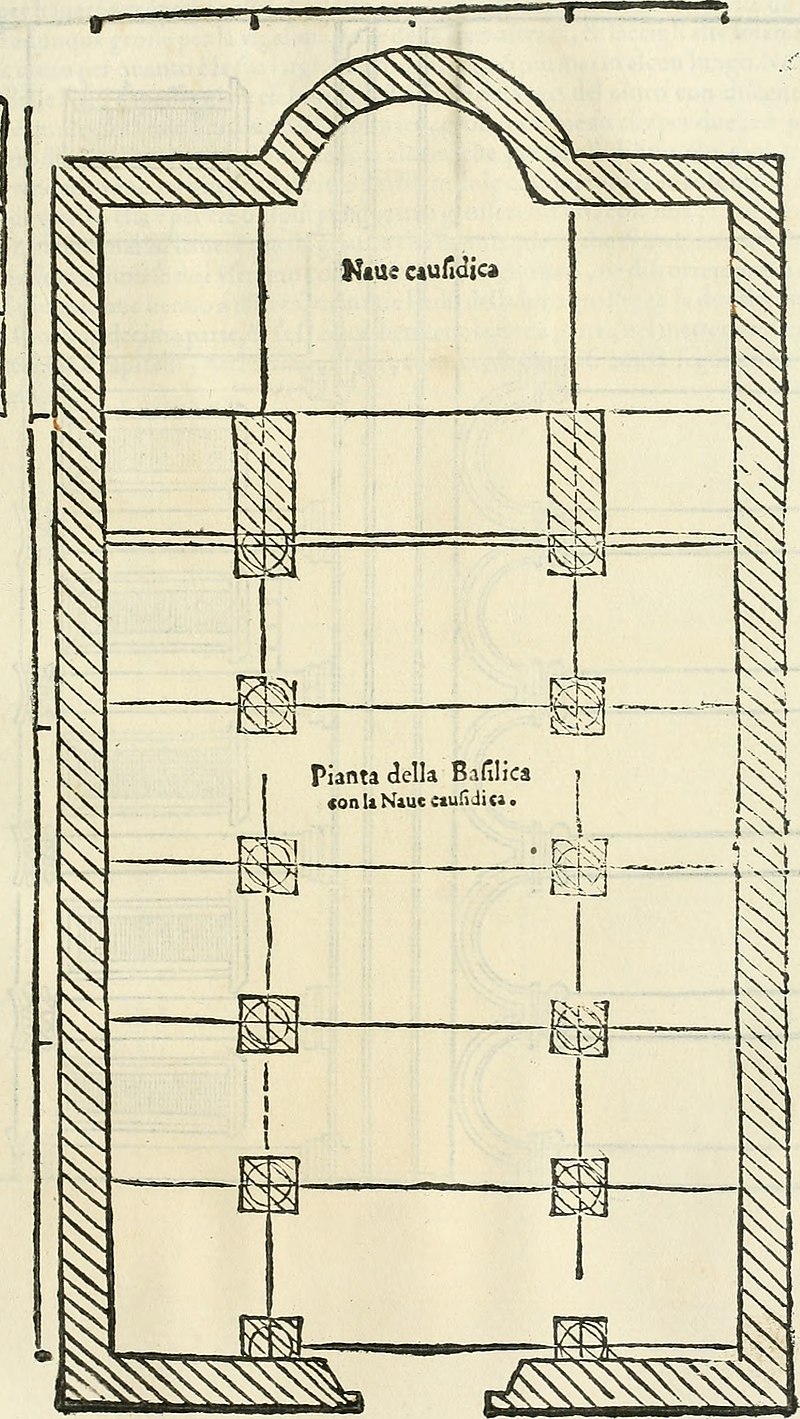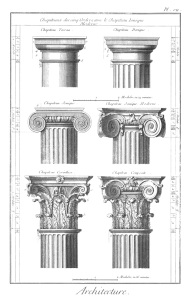In Rome, Leon Battista Alberti had plenty of time to study its ancient sites, ruins, and objects. His detailed observations, included in his De Re Aedificatoria (1452, On the Art of Building), were patterned after the De Architectura by the Roman architect and engineer Vitruvius (fl. 46–30 BC).

Image source: https://en.wikipedia.org/wiki/De_re_aedificatoria#/media/File:Alberti_-_De_re_aedificatoria,_1541_-_2495761_F.jpeg
Alberti left Rome with the Pope and stayed at the court of Rimini. Nicholas V, Pope from 1447 to 1455, was a lover of classical studies and created an environment in keeping with Alberti.

Image source: https://en.wikipedia.org/wiki/De_re_aedificatoria#/media/File:L’architettura_(1565)_(14758258226).jpg
In 1447, the year in which Nicholas V became Pope, Alberti became a canon of the Metropolitan Church of Florence and Abbot of Sant’ Eremita of Pisa.
Through a critical reading of the Roman architect Vitruvius’s De Architectura and an antiquarian knowledge of Classical remains, Alberti advanced the first coherent theory on the use of the five Classical orders of Greek architecture since Antiquity, relating their use to different building classes.

Image source: https://en.wikipedia.org/wiki/Classical_order
The collaboration between Alberti and Nicholas V led to the origin of the first building projects of Renaissance Rome, and the reconstruction of St.Peter’s and the Vatican Palace. With the death of the Este prince, in 1452 Alberti dedicated the theoretical result of his long study of Vitruvius to Nicholas V that.
The work was the first architectural treatise of the Renaissance on a wide range of topics ranging from history to urban planning, from engineering to the philosophy of beauty.
This was his De re aedificatoria (Ten Books on Architecture), completely new work and not a restored text by Vitruvius. It became a bible of Renaissance architecture, incorporating and advancing upon the engineering knowledge of antiquity, and grounding the stylistic principles of classical art into a fully developed aesthetic theory of proportionality and harmony.

Image source: https://search.creativecommons.org/photos/fc7153d2-9f03-431d-ba32-1f893926dc63

Image source: https://search.creativecommons.org/photos/54e83f81-c66b-4cc1-b4ba-f116a41eb2f2 by Ralph Buckley
De re aedificatoria is divided into ten books and includes:
- Book One: Lineaments
- Book Two: Materials
- Book Three: Construction
- Book Four: Public Works
- Book Five: Works of Individuals
- Book Six: Ornament
- Book Seven: Ornament to Sacred Buildings
- Book Eight: Ornament to Public Secular Buildings
- Book Nine: Ornament to Private Buildings
- Book Ten: Restoration of Buildings
This book, as the first comprehensive treatise on Renaissance architecture, is in many respects comparable to the earlier Della Pittura, although it was more of original research work, and was more influential.
Info source:
http://www.britannica.com/biography/Leon-Battista-Alberti
https://en.wikipedia.org/wiki/Leon_Battista_Alberti
https://en.wikipedia.org/wiki/De_Re_Aedificatoria
http://www-groups.dcs.st-and.ac.uk/~history/Biographies/Alberti.html
http://www.visual-arts-cork.com/old-masters/alberti-leon-battista.htm#architecture
please also visit https://www.idesign.wiki/
